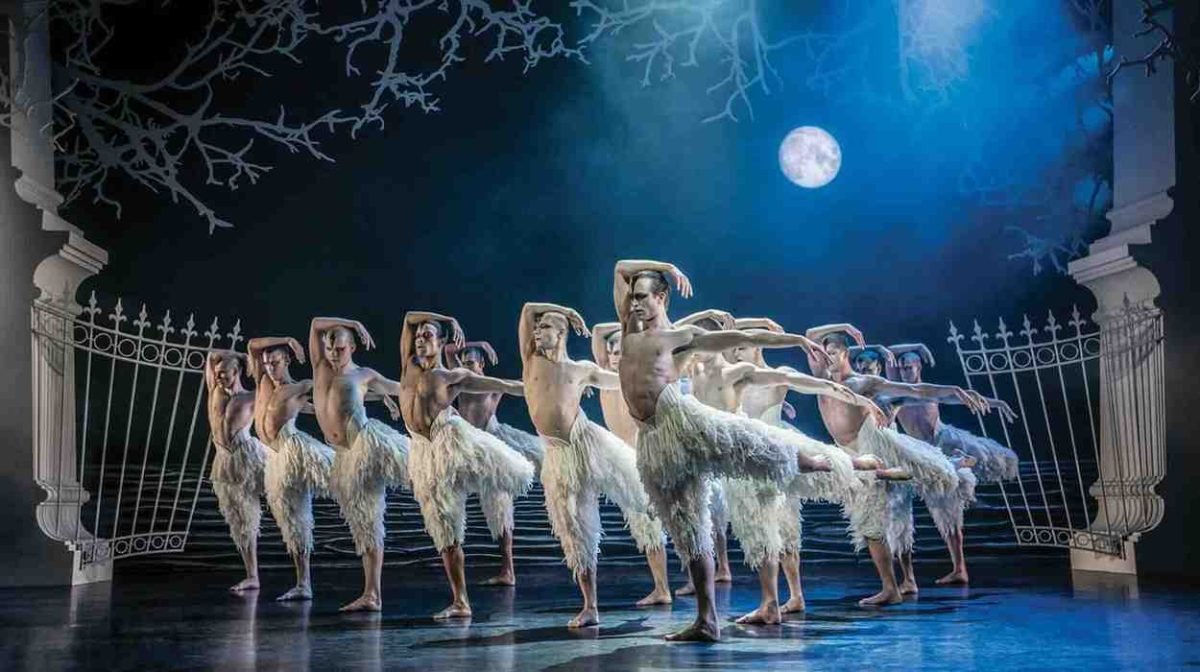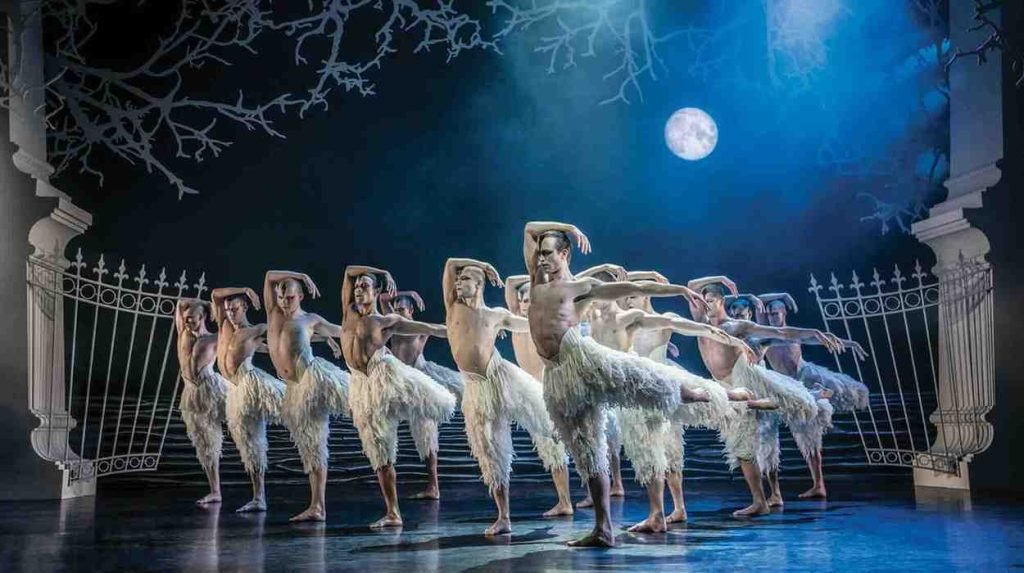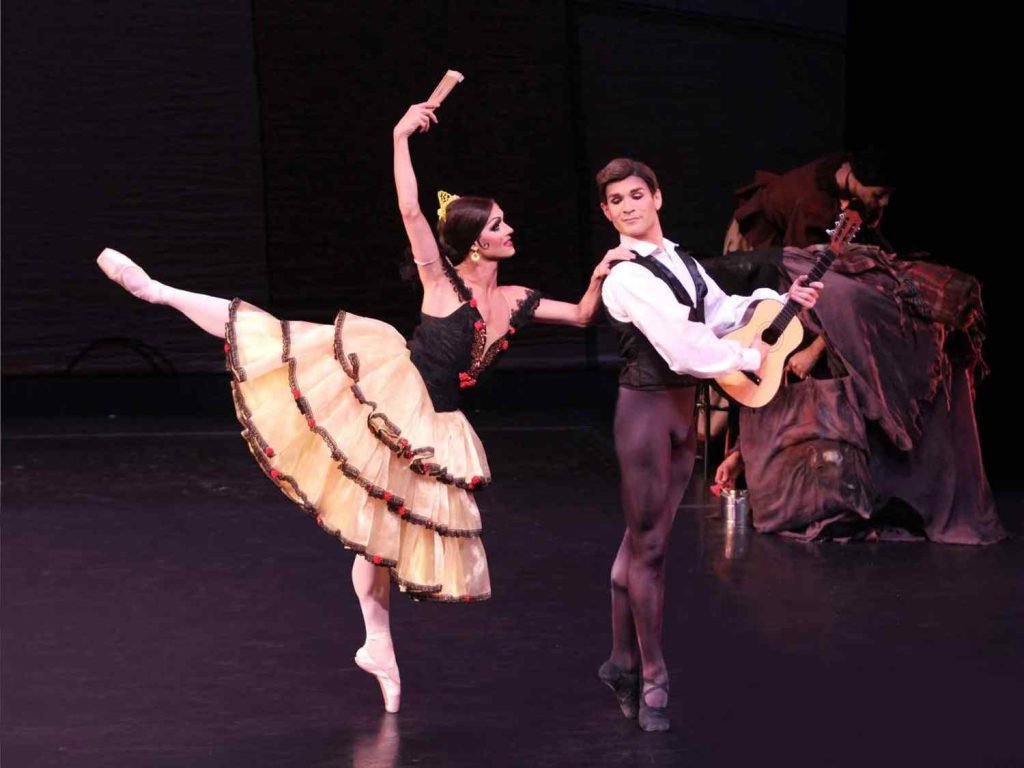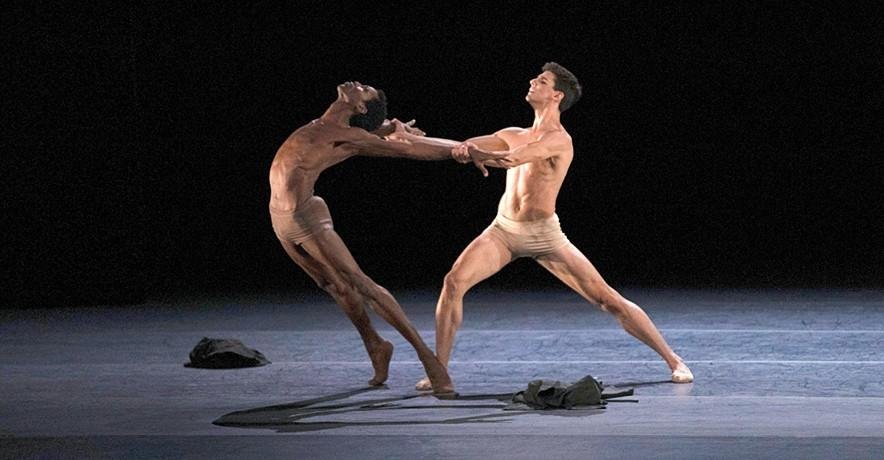Article by Aditri Chawla and design by Anagha Madan for En Avant July/August 2024
The narrative of nearly every classical ballet revolves around a man and a woman. The ballerina captivates us with her graceful pointework, while the male dancer impresses with his strength and agility. Together, they perform the iconic pas de deux, with their love and struggles propelling the story forward. This recurring theme often turns ballet into a tale of boy meets girl: Aurora and Prince Désiré in Sleeping Beauty, Kitri and Basilio in Don Quixote, Odette and Prince Siegfried in Swan Lake.
However, as society has progressed, so too has the art of ballet, with contemporary works increasingly embracing diverse narratives, including those that explore queer themes and characters. This shift not only reflects the growing acceptance of LGBTQ+ identities in the broader cultural landscape but also marks a significant step towards inclusivity within the world of dance.
New Adventures by Matthew Bourne
New Adventures, the visionary dance company founded by Matthew Bourne, stands as a trailblazer in advocating for LGBTQ+ representation in ballet. Bourne, an openly gay choreographer, has consistently incorporated his works with queer themes, creating productions that resonate deeply with diverse audiences. Beyond his renowned Swan Lake, New Adventures has brought to life numerous ballets that explore identity, love, and relationships through a queer lens. The company’s dedication to inclusivity extends far beyond the stage, with outreach programs and educational initiatives designed to support young LGBTQ+ dancers and foster an inclusive dance community.
New Adventures is more than just a dance company; it is a cultural institution that has revolutionized dance-theatre in the UK and beyond. Since its founding in 1986, Matthew Bourne and New Adventures have inspired and nurtured people of all ages and backgrounds. Through world-class productions and dynamic community projects, New Adventures reaches thousands of people worldwide every year, continuously pushing the boundaries of storytelling through dance with a signature theatrical flair.
“Don Quixote” by Les Ballets Trockadero de Monte Carlo
Les Ballets Trockadero de Monte Carlo, affectionately known as “The Trocks,” is an all-male ballet company that has carved a unique niche in the world of dance by blending classical ballet with comedic parody. Since its founding in 1974, the company has gained international acclaim for its playful yet technically impressive performances, where male dancers take on both male and female roles, often performing en pointe. Their approach not only entertains but also challenges traditional gender roles in ballet, making their performances both humorous and thought-provoking.
One of the standout pieces in the Trocks’ repertoire is their interpretation of Don Quixote. In this performance, the dancers bring a playful and exaggerated twist to the classic ballet, infusing it with their trademark humor while maintaining the high level of technical skill that classical ballet demands. The characters, portrayed by the male dancers in drag, are larger-than-life, with flamboyant expressions and comic timing that add a layer of parody to the traditionally serious ballet.
What makes the Trocks’ performances so captivating is the balance they strike between humor and technical brilliance. Their Don Quixote is not just a parody but also a tribute to the art form, showcasing the dancers’ ability to perform challenging choreography with both precision and comedic flair. This performance, like much of their work, is a testament to the Trocks’ ability to entertain while pushing the boundaries of traditional ballet.
“Fire, flood, illness, trauma — nothing could stop Les Ballets Trockadero de Monte Carlo from dancing, and all for you, you, you.”
– Alastair Macaulay, The New York Times
“Touché” by American Ballet Theatre
The American Ballet Theatre (ABT), founded in 1939, is a leading ballet company known for its classical performances and artistic excellence. Over the years, ABT has expanded its focus to include a wider range of themes and stories, reflecting the changing world of contemporary ballet. The company is dedicated to promoting diversity and inclusivity, which is evident in its diverse programming and outreach efforts. An example of ABT’s commitment to diversity is Christopher Rudd’s Touché, which premiered in 2022. Rudd, known for his work on LGBTQ+ themes, created Touché to explore queer identity and relationships. The ballet dives into personal and emotional experiences, offering a nuanced view of the challenges faced by queer individuals. Through its moving choreography, Touché addresses vulnerability and societal expectations, bringing a fresh perspective to traditional ballet stories.
Touché is notable for its unique storytelling and the blend of technical skill with meaningful themes. Rudd’s choreography captures the emotions of navigating queer identities, creating a powerful and thought-provoking experience for audiences. By including Touché in its repertoire, ABT demonstrates its dedication to artistic innovation and its role in supporting LGBTQ+ representation in dance, reflecting a wide range of experiences and perspectives within the ballet world.
Incorporating queer characters and themes into ballet goes beyond mere representation; it fosters a more inclusive and equitable art form that mirrors its diverse audience. By challenging traditional views on gender and sexuality, queer narratives offer a broader spectrum of human experiences and emotions. This inclusivity enriches ballet, expanding its storytelling potential and allowing for more nuanced portrayals.
Companies like these are leading the way in this movement, helping to ensure that ballet remains vibrant and relevant. They provide opportunities for self-expression but also inspires future generations to pursue passion without fear of discrimination.Embracing diverse stories and voices continues to make ballet more accessible for all audiences, marking a significant step toward a more inclusive and equitable future.











Leave a Reply